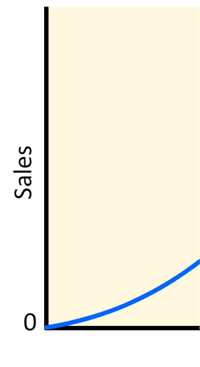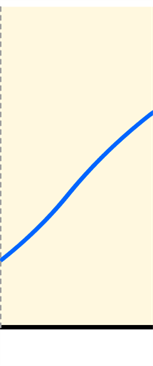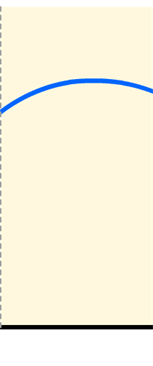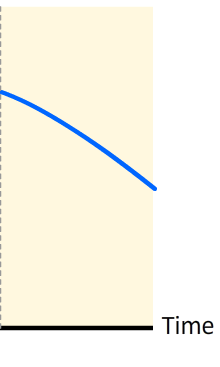Week 11.2 Developing the Promotional Mix
You have seen five promotional mix elements in the previous lesson. A firm's promotional mix is the combination of one or more of the promotional mix elements. Marketers question which promotional tools are superior. For example, should advertising be emphasized more than personal selling? Should a promotional rebate be offered? The decision on the choice of promotional mix elements depends on several factors:
- Target audience
- Stage of the product's life cycle
- Characteristics of the product
- Decision stage of the buyer
- Channel of distribution
1. Target Audience
The target audience for the promotion is critical to the success of the campaign. Promotional programs could be directed to the end user (households or business users), an intermediary (retailer, wholesaler, or industrial distributor), or both.
Promotional programs directed to buyers of consumer products for households often use mass media, because the number of potential buyers is large. Personal selling carries a critical importance especially for reaching out to business buyers. Personal selling is somewhat more affordable when it is directed at business buyers, since the number of business buyers is smaller than the number of households. Personal selling is ideal to answer the technical questions business buyers might have. Advertising could be used towards business buyers as well. It is effective especially when it is used selectively in trade publications. Other than business buyers and households, intermediaries could be the target market of promotional efforts. As with business buyers, personal selling is the major promotional ingredient for the intermediaries.
2. Stage of the Product Life Cycle
Products go through a life cycle that consists of four stages:
- Introduction stage
- Growth stage
- Maturity stage
- Decline stage
Each of the four stages has a different promotional objective and promotional tools that are designed to match that objective. The figure below shows the product life cycle for Purina Dog Chow as an example.
Product Life Cycle of Purina Dog Chow
| Stage of product life cycle | Introduction | Growth | Maturity | Decline |
|---|
Curve
|
 |
 |
 |
 |
|---|
| Promotional objective |
To inform |
To persuade |
To remind |
To phase out |
|---|
| Promotional activity |
- Publicity in veterinary magazines
- Advertising
- Salesforce calling on intermediaries
- Sales promotion in the form of free samples
|
- Personal selling to intermediaries
- Advertising to differentiate Dog Chow attributes from those of competing brands
|
- Reminder advertising
- Sales promotion in the form of discounts, coupons, and events
- Limited personal selling
- Direct-mail reminders
|
- Little money spent on promotiion
|
|---|
Introduction Stage
The introduction stage is the first stage of the product's life cycle. Since the product is new in the market, the promotional objective is to inform consumers in an effort to increase their level of awareness.
In general, all of the promotional mix elements can be used at the introduction stage. In the example above, Purina applied publicity in veterinary magazines, sales promotions in the form of free samples, advertising in pet-related magazines and possibly on TV, and personal selling by calling on intermediaries.
Growth Stage
The growth stage is the next stage after the introduction stage. The primary promotional objective is to persuade the consumer to buy the product rather than its substitutes. Promotional elements are selected in order to gain brand preference and to solidify distribution. Businesses try to gain market share at this stage.
The most applied promotional elements in the growth stage are advertising and personal selling. Advertising is a great tool to differentiate the product's attributes from those of the competing products. Advertising helps to stress brand differences. Personal selling is used towards intermediaries to solidify the channel of distribution in the growth stage.
Maturity Stage
The maturity stage is the next stage. In this stage, businesses seek to maintain existing buyers. The fight to gain market share in the growth stage turns to defending the gained market share in the maturity stage. The promotional objective in the maturity stage is to remind the consumers of the product's existence.
Advertising plays an important role in reminding consumers about the product/service. Sales promotions in the form of discounts and coupons are offered as a part of the reminder orientation. 80% of the Purina Dog Chow's sales at the maturity stage resulted from sales promotions. Direct marketing actions, such as direct mail, are used to maintain involvement with existing customers and to encourage repeat purchases. Price cuts and discounts can be helpful to increase the sales.
Decline Stage
The decline stage is the last stage of the product life cycle. Businesses do not spend much on promotion in the decline stage. It is the stage at which the product is phased out.
Critical Thinking Activity: Consider the stage of the life cycle for the product/service in your group work project. Decide on the promotional objective based on the stage of the life cycle.
3. Characteristics of the Product
When designing the promotional mix elements, the characteristics of the product should be considered. Three characteristics are especially important:
- Complexity
- Risk
- Ancillary services
Complexity
Complexity refers to the technical sophistication of the product. Some high-tech products might require learning how to use them. Personal selling is the best promotional tool for complex products. The two-way communication between seller and buyer in personal selling allows the seller to explain how to use the product’s complex features in order to get the most benefit from it. The more complex the product is, the greater the emphasis on personal selling.

Retrieved from https://www.bombardier.com/en/aerospace/
business-aircraft.html
Example: Bombardier Business Aircraft is a complex product. It is not easy to provide much information on a 25-second TV ad. Personal selling is preferred to make contact with potential buyers and to explain the aircraft’s features.
Risk
Purchase of products might carry different types of risk such as financial risk, social risk, and physical risk. Personal selling is used to relieve the anxiety caused by the risks. The greater the risk, the greater is the need for personal selling.

JamesReillyWilson/E+/Getty Images
Example: A private jet might represent all three risks. A jet is expensive, which refers to the financial risk. Safety of the plane is extremely important, which relates to the physical risk. Friends or family will see and evaluate it, which relates to the social risk.
Ancillary Services
Ancillary services refer to the degree of service, maintenance, or support required after the sale. Personal selling is essential to build buyer confidence in the continuous customer service.

izusek/E+/Getty Images
Example: You buy a 3D printer. You need to know if the seller will provide support after the sale in the maintenance and service of the printer. The salesperson would assure you about the support available, which happens with personal selling.
Critical Thinking Activity: Compare how the following two companies differ on complexity, risk, and ancillary services.

Retrieved from http://www.strata
sys.com/
1. Stratasys Ltd., headquartered in Minnesota, sells to both the commercial 3D printing market and to the consumer 3D printing market.

Retrieved from http://www.
scjohnson.ca/en/scj_home.aspx
2. SC Johnson, the maker of Windex glass window cleaner, sells to the consumer market.
4. Decision Stage of the Buyer
There are three stages of the buying decision that affect the promotional mix:
- Pre-purchase
- Purchase
- Post-purchase
The figure below shows these three stages and the relative importance of promotional tools in each stage.
Relative importance of promotional tools at three stages. The three stages include pre-purchase, purchase, and post-purchase. Advertising is more important in the pre-purchase and post-purchase stages. Public relations is more important in the pre-purchase stage, becoming gradually less important through the purchase and post-purchase stages. Sales promotion and direct marketing remains important throughout, but increases slightly during the purchase stage. Personal selling is most important in the purchase stage, and much less important in the pre-purchase and post-purchase stages.
©University of Waterloo
Pre-purchase Stage
In the pre-purchase stage, consumers are looking for information on the brands in the market. They want to learn how different brands compare. Advertising is more helpful than personal selling in this stage because advertising informs the potential customer of the existence of the products and their features. Sales promotion in the form of free samples can be very helpful in informing consumers.
Purchase Stage
In the purchase stage, the consumer is ready to make the purchase decision. Consumers are not looking for information in this stage since the consumer collected all the necessary information in the pre-purchase stage. Personal selling has the highest importance in the purchase stage, whereas the impact of advertising is lowest. Sales promotions in the form of coupons, deals, point-of-purchase displays, and rebates can be very helpful in the purchase stage to give the consumer the incentive to make the purchase.
Post-purchase Stage
This is the stage following the purchase. Personal selling is again important. The more personal contact after the sale, the more the buyer is satisfied. Advertising is also important in the post-purchase stage. It helps assure the buyer that the purchase decision was the right decision. Advertising and personal selling help reduce the buyer's post-purchase anxiety. Sales promotions in the form of coupons and direct marketing reminders can be used in order to encourage repeat purchases. Public relations plays a small role in the post-purchase stage.
5. Channel of Distribution
Manufacturers/producers would like to get cooperation from the intermediaries in the channel of distribution. Achieving control of the channel could be difficult. Producers often apply promotional strategies to assist in moving their product through the channel of distribution. There are two main promotional strategies applied by manufacturers/producers:
- Push strategy
- Pull strategy
Push Strategy
The manufacturer/producer directs the promotional mix to channel members to gain their cooperation. The goal is to encourage the intermediaries in the marketing channel to order and stock the product. As channel members place their orders, the product is pushed through the channel by the intermediaries to the consumers at the end.
Among the promotional elements, personal selling and sales promotions play major roles in the push strategy. Salespeople make calls to wholesalers to encourage orders. Case discount allowances can be applied as sales promotions.

Retrieved from http://www.molsoncoors.com/en
Example: Molson spends a large percentage of their promotional budget on promotions towards intermediaries.
A comparison of the push and pull strategies. In the push strategy the flow of demand stimulation and promotion is directed from the manufacturer, to the wholesaler, to the retailer, to the consumer. In the pull strategy, the flow of demand stimulation comes from the consumer, to the retailer, to the wholesaler, to the manufacturer, but the flow of promotion (advertising) is directed from the manufacturer to the consumer.
©University of Waterloo
Pull Strategy
When manufacturers face resistance from channel members who do not want to order, they may switch to the pull strategy. The pull strategy is the opposite of the push strategy. The producer/manufacturer directs its promotional mix at ultimate consumers. The goal is to encourage the customers to ask the retailer for the product. When retailers realize the demand from the consumers, they order the product and the item is pulled through the intermediaries.

Retrieved from https:
//www.pg.ca/en-CA/
Example: Procter and Gamble uses the pull strategy. They apply promotions towards the consumers such as e-mail marketing campaigns, websites with electronic couponing, and Facebook pages directed at ultimate consumers.